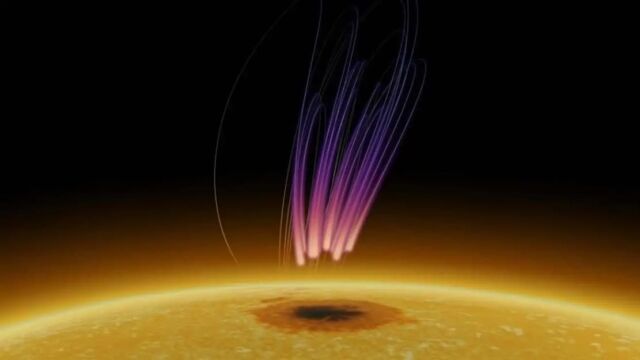
Aurora-like emission on the Sun detected about 40,000 kilometers above a dark region for the first time.
A team of astronomers uncovered prolonged radio emissions above a sunspot, akin to those previously seen in the polar regions of planets and certain stars.
Similar bursts have been observed in magnetically active low-mass stars and brown dwarfs, often prompting analogous interpretations.
In a study published in Nature Astronomy, astronomers from New Jersey Institute of Technology’s Center for Solar-Terrestrial Research (NJIT-CSTR) have detailed radio observations of an extraordinary aurora-like display — occurring 24,855 miles (40,000 km) above a relatively dark and cold patch on the Sun, known as a sunspot.
Researchers say the novel radio emission shares characteristics with the auroral radio emissions commonly seen in planetary magnetospheres such as those around Earth, Jupiter, and Saturn, as well as certain low-mass stars.
The study’s lead author and NJIT-CSTR scientist, Sijie Yu, said:
“We’ve detected a peculiar type of long-lasting polarized radio bursts emanating from a sunspot, persisting for over a week. This is quite unlike the typical, transient solar radio bursts typically lasting minutes or hours. It’s an exciting discovery that has the potential to alter our comprehension of stellar magnetic processes.”
The findings offer new insights into the origin of such intense solar radio bursts and may provide an alternative explanation for aurora-like radio emissions on other flare stars with large starspots.
Image credit NJIT-CSTR / Sijie Yu





Leave A Comment